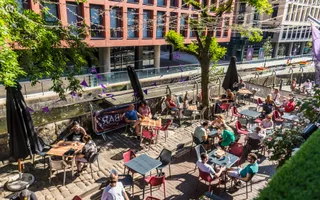LGBT+ History Month
LGBT+ History Month (which began in the UK in 2005) is a dedicated period for celebrating and acknowledging the rich history, contributions, and struggles of LGBTQ+ communities.
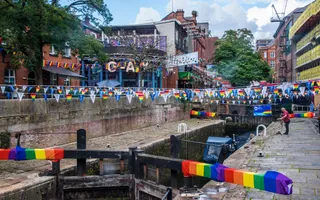
What's happening on Canal Street?
This year, our LGBTQ+ Forum are going to celebrate the LGBTQ+ history of Canal Street. We are proud of the role that the Rochdale Canal has played in shaping Manchester’s Gay Village into the place we love and enjoy today.
Local history is shaped by peoples’ stories. To help us understand the history of Canal Street we are therefore keen for you to share yor stories of their first visit to the Gay Village. We will also chat about what the area means to them now and how it has influenced your lives.
Our goal is not only to preserve the historical significance of this area, but to also help us understand the importance of spaces like Canal Street for the LGBTQ+ Community. Speaking to the public also helps us emphasise the broader significance of Canal Street in shaping the community’s identity, highlighting the need for community awareness and acknowledgement of our shared history.
History of the Rochdale Canal and Canal Street
The Rochdale Canal was the first trans-Pennine waterway. Opened fully in 1804, it was designed to provide a quick route for goods to get between the big industrial powerhouses of Manchester and Leeds. This led to development of warehouses and mills along the canal, including Canal Street. As a trade artery, pubs and other businesses developed to provide services for the people working on and travelling along the canal or working around the canal.
Echoing the decline of industry throughout Manchester, the area around the Rochdale Canal and Canal Street started to decline and fall into decay from the early 1900s. This was intensified with the decline of the canal. Canals in the early 1900s were suffering from competition from railways, where they couldn’t compete with the speed the railways provided. The Rochdale Canal fell into disuse from the 1930s until 1950s, when in 1965 the canal along Canal Street was effectively unusable. This once thriving trade artery had now fallen into decay and dereliction.

The decline of industry and canal trade meant Canal Street became an area that was dark, unvisited and out of the way. This, along with it being close to major transport links, led to it being an ideal area for gay men to meet. During this period being homosexual was illegal with the police actively enforcing laws. Canal Street’s decay and decline therefore provided a welcome hideaway for homosexual people to meet.
The Union Hotel, right next to Lock 87 (Princess Street Lock), started to attract lesbians and gay men in the 1950s. Within the area of urban decay around the Rochdale Canal, and with the added benefit of it’s frosted glass windows, it was a place people could go without others seeing. With changes in public attitudes and decriminalisation of homosexuality, things around Canal Street started to change. In 1990, Manto opened and was the first bar in the area to not be hidden away, with large glass windows overlooking Canal Street and the Rochdale Canal. This led to more bars opening and becoming openly LGBTQ+. The restoration of the Rochdale Canal in 2002 added further to the transformation of the area into a vibrant and thriving space.
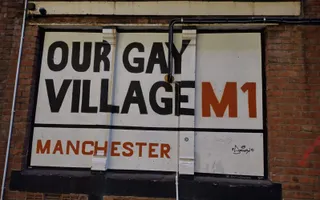
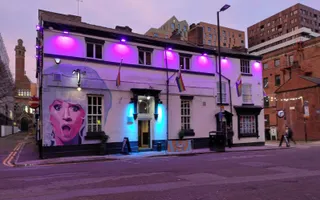
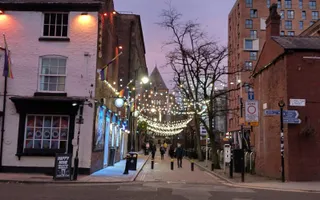
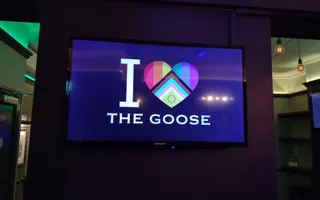
Sign say Our Gay Village M1 Manchester
Last Edited: 19 February 2024


Stay connected
Sign up to our newsletter and discover how we protect canals and help nature thrive


